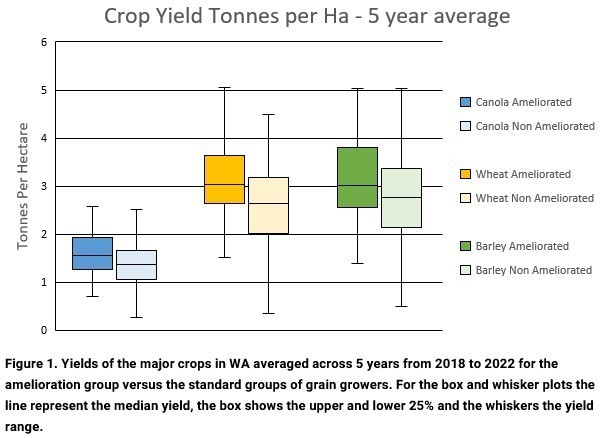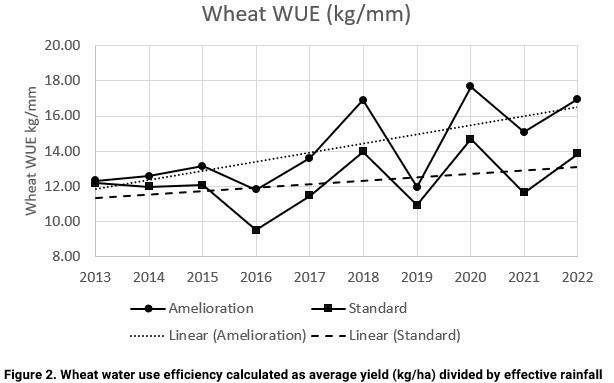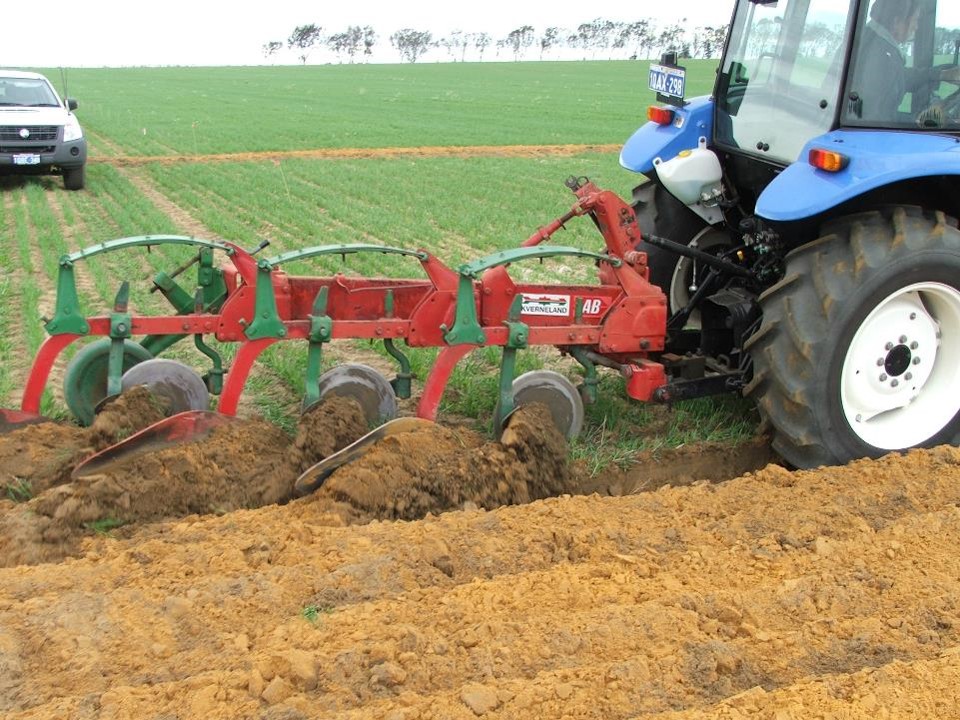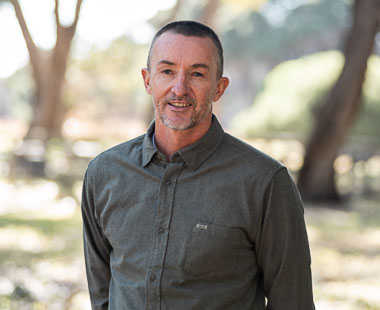On the 28th of July, 2007, when I was working with the Ag Dept, I set out with Steve Davies and others to put in three mouldboard plough plus lime trials on some sandy soil at Mingenew. I can remember the date because it was a drought year and we needed to wait until the end of July until the soil was wet enough to plough. I also remember the date because what we saw on that day changed everything I thought I knew about farming sandplain soil.
These trials coincided with the Hayes family at Badgingarra building and operating the first spader (to my knowledge) in Western Australia. These trials, and others, produced some fantastic yield responses that you have all seen over many years of research since.
Fast forward to 2023 and I teamed up with Farmanco farm business consultants Kelly Ryan, Hilary Bunny, Ben Curtis and Rob Sands to deliver a project funded by GRDC and DPIRD to measure the whole farm economics of soil amelioration across the state.
We found that the early adopters of soil amelioration have made, on average, an extra $3.7M profit each so far. An extra $100/ha/year operating profit over 10 years.
They are some big numbers. Let’s take a look at how we did it.
The first step was to identify clients, for whom there are long term records, who have adopted soil amelioration. When we are talking amelioration, it was mostly the lime, flip (mouldboard/spader) and rip (to 50cm or greater)
These clients were then compared to others in comparable rainfall regions and referred to as the ‘standard’ group. All client data was de-identified before sharing data between organisations, and all data is presented on a per hectare basis to avoid the possibility of any farm businesses being identified.
Scale
The scale of the farms differed between the amelioration group and the standard group. On average, the farms of the amelioration group are larger than the standard group.

Rainfall
On average, the soil amelioration group received less rainfall than the standard group.

Crop yields
Despite receiving less rainfall on average, the amelioration group had higher crop yields than the standard group.

Water use efficiency
The higher yields of the amelioration group with less rainfall were achieved through improved water use efficiency (WUE). The 10-year average wheat WUE was 14.8kg/mm for the amelioration group and 12.2kg/mm for the standard group, a difference of 2.6kg/mm. This gap widened in the last three years of the study period with a 3.2kg/mm difference observed between the two groups.
WUE is trending upwards over the 10-year time frame for both groups, although the trend is steeper for the amelioration group (Figure 2). WUE was almost identical for both groups in 2013 which was before the commencement of soil amelioration for most growers in the study.

Operating profit
Operating profit was higher by $100/ha per year across 10 years for the amelioration group compared to the standard group. The 10-year average annual operating profit was $292/ha for the amelioration group and $192/ha for the standard group. There was no difference in profit between the two groups at the start of the study in 2013 and 2014 which was before the commencement of soil amelioration for most growers. Profit was also similar for both groups in the low rainfall year of 2019. This profit gap widened in the last three years of the study where there was a $157/ha difference between the two groups (Figure 3).
For the average crop area of a WA farm of 3765ha, this $100/ha increase in operating profit equates to an average increase of $3.76M in extra profit over the 10-year duration of this study. And many growers in the study didn’t start ameliorating until about 2016 to 2018, so this number is a conservative estimate of the benefit.
It is important to note that this result is unlikely to be due entirely to soil amelioration as these high performing growers are known to be very skilled at all aspects of farming. However, given that profit levels and WUE were similar for both groups at the start of the study in 2013, it seems that soil amelioration has played a significant part.

Operating costs
The amelioration group spent, on average, $59/ha more to grow a crop than the standard group, with the amelioration group averaging costs of $509/ha and the standard group averaging $450/ha (Figure 5).
Approximately $25/ha of this extra cost can be attributed to the costs associated with harvesting, transporting, and grain handling fees due to the higher yielding crops of the amelioration group. This extra cost also covered the cost of the amelioration itself, although this was not measured independently in this study.
Machinery value
The total machinery value/ha increased signifcantly for both groups over the 10 years of the study, averaging $495/ha in 2013, inceasing to $800/ha in 2022. There was little difference in machinery investment per hectare between the two groups.
Discussion
Some of the growers in this study began soil amelioration in earnest in 2011, however most did not begin until around 2016, and many still had a significant area of their farm to ameliorate. Therefore, the WUE, yield and profitability figures are likely to improve beyond the levels reported over the past 10 years as growers complete their amelioration programs. It is evident that the results in the last three years of the study, 2020–2022, had higher levels of profit, WUE and yield given that a higher proportion of the farms had been ameliorated compared to earlier in the study. These three years were generally considered to be good to excellent growing seasons across the State, with record profits achieved in 2021 and 2022.
The low rainfall year of 2019 demonstrates that in a poor year there may be little difference between those who have ameliorated and those who have not. In 2023, some growers who had practiced soil inversion in recent years observed negative yield responses to amelioration, especially in the northern grainbelt, possibly due to soil surface crusting, and the absence of the water repellent sand layer creating a mulch and water harvesting effect with small and infrequent rainfall events. It is likely, and is reported, that deep ripping will provide yield benefits in these poor years, but the gains from soil inversion may not be realised.
Soil amelioration requires specialised machinery to complete the amelioration, and often large tractors with high horsepower. One may assume that those practicing soil amelioration, therefore, would have higher levels of machinery investment. However, this was not the case with machinery investment being similar for both the amelioration and the standard groups. It seems that the cost of machinery should not be a barrier to practicing soil amelioration.
Summary
If you have soil that will respond to any form of amelioration, get on it!
There is less data on sodic/duplex soils, and these will be the focus of future research.
But, if you have any combination of acidity at depth, water repellence, and/or compaction, soil amelioration will make you money.


